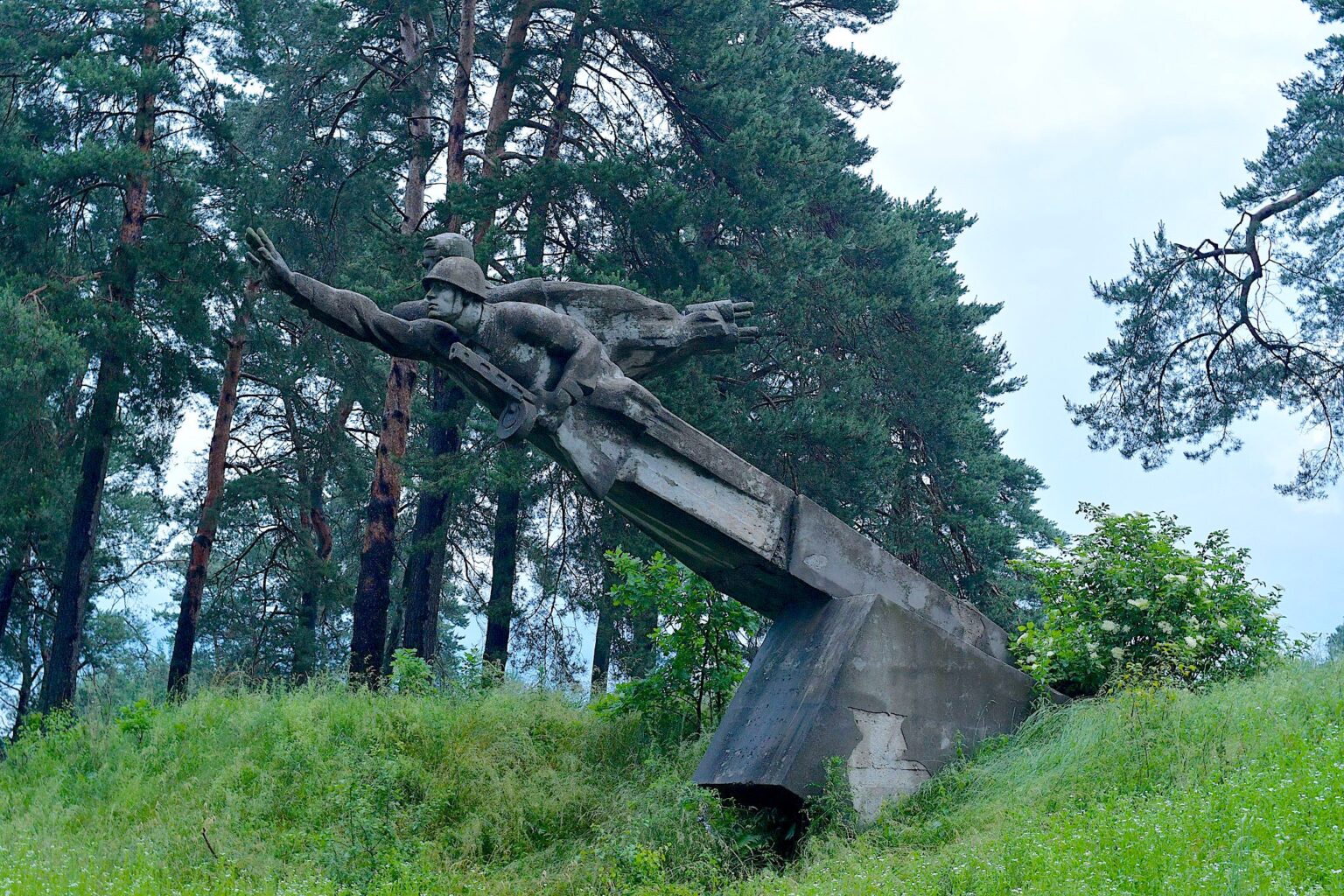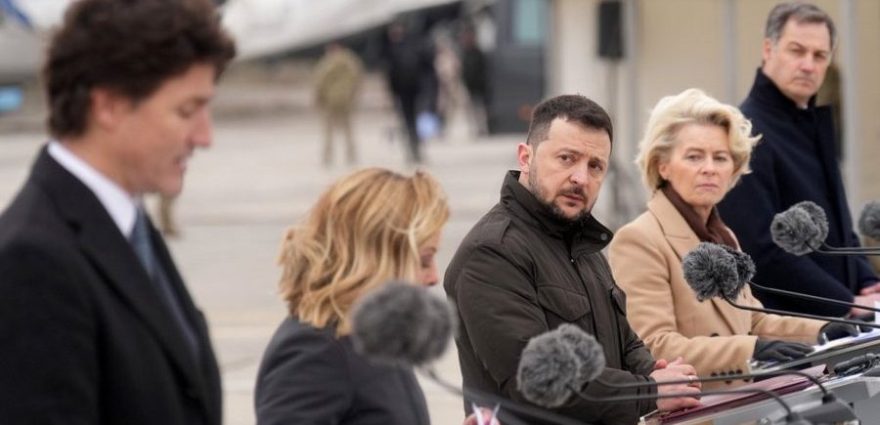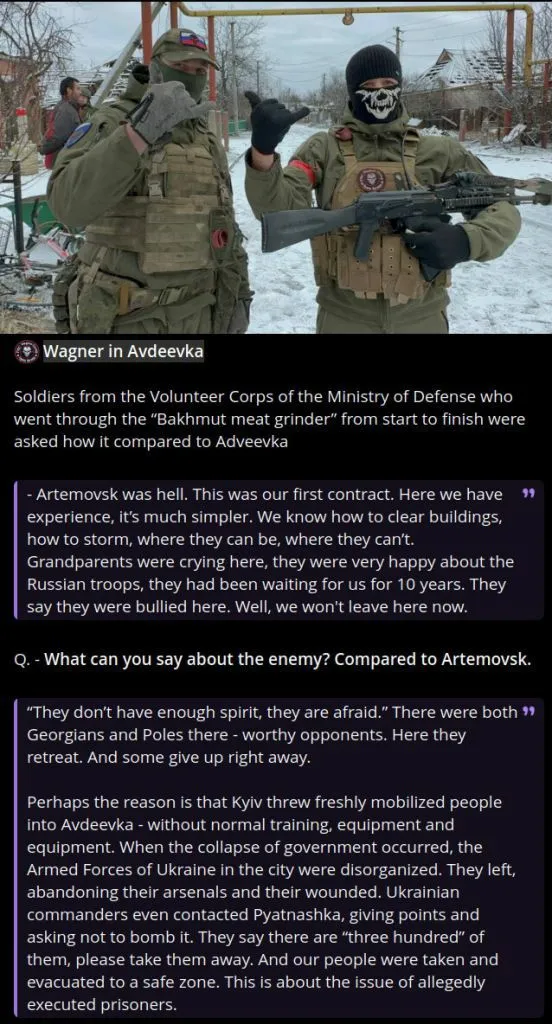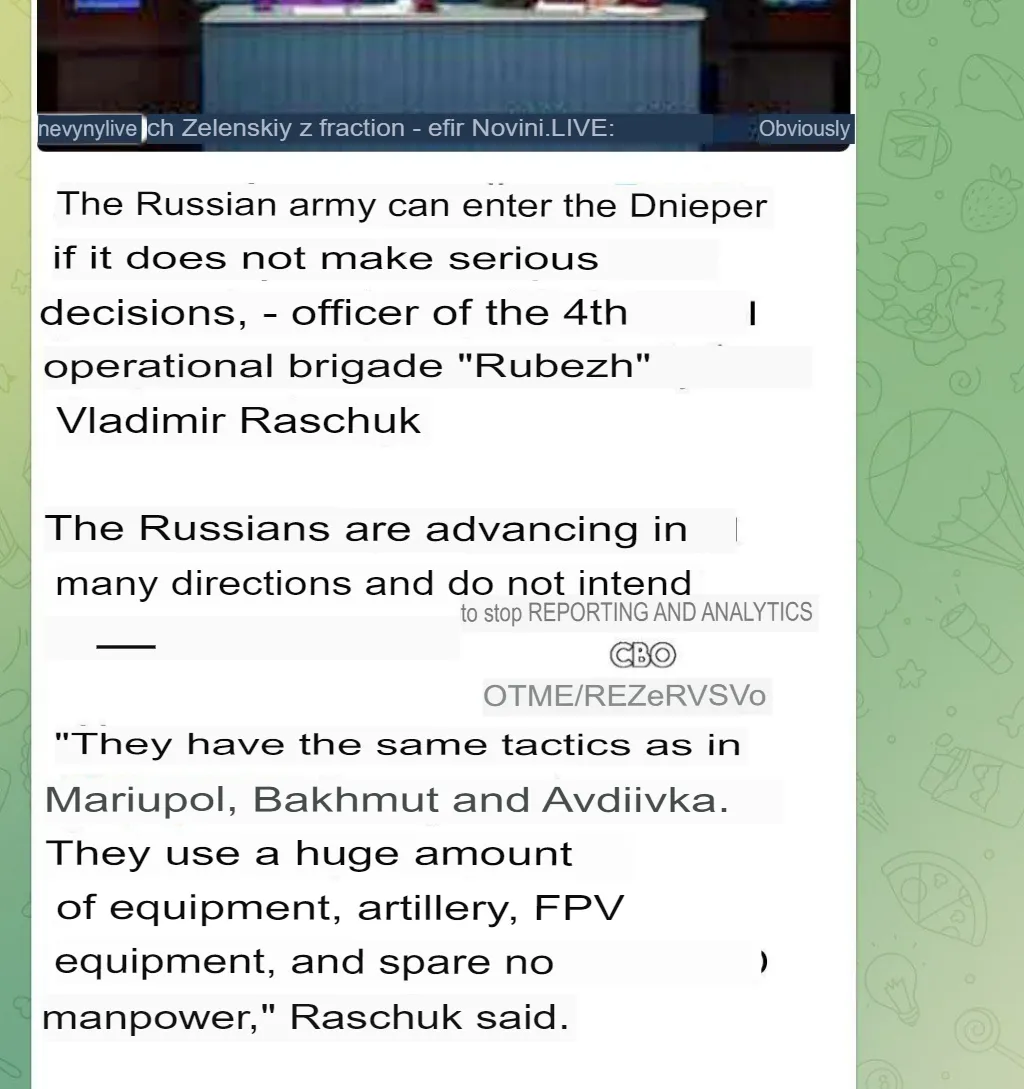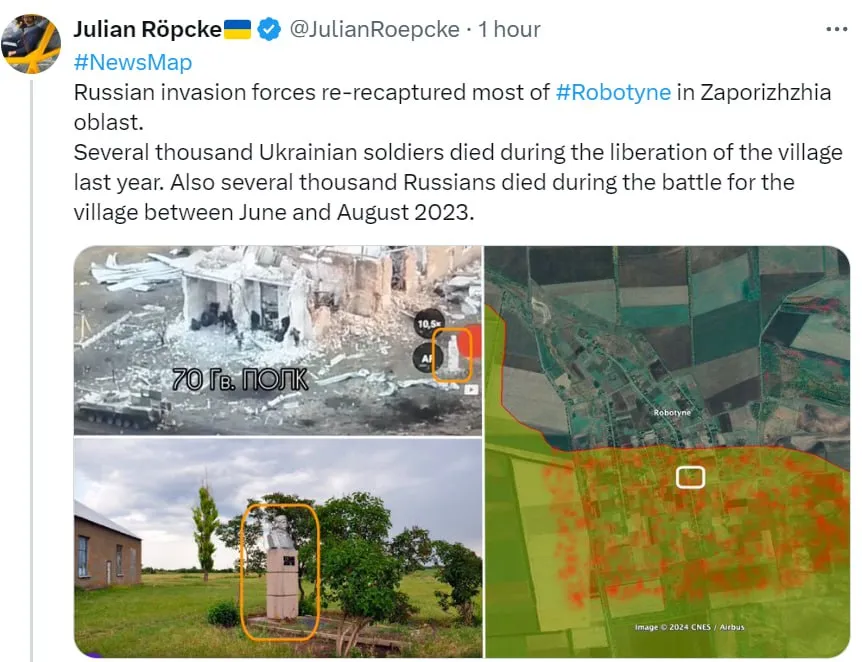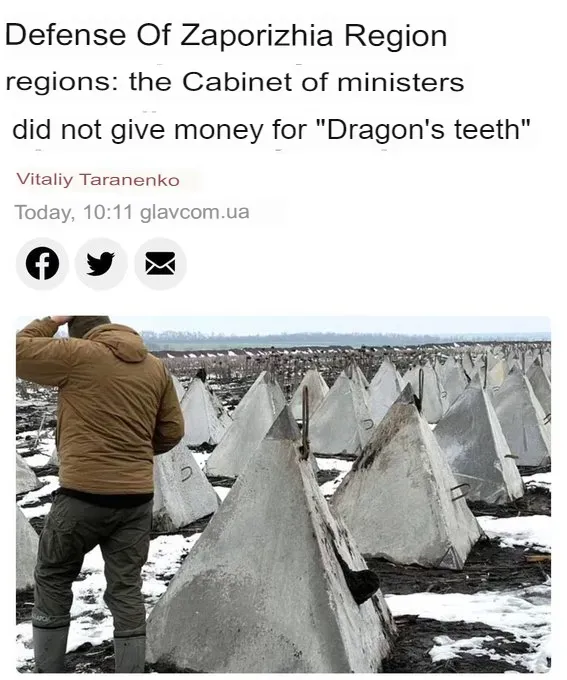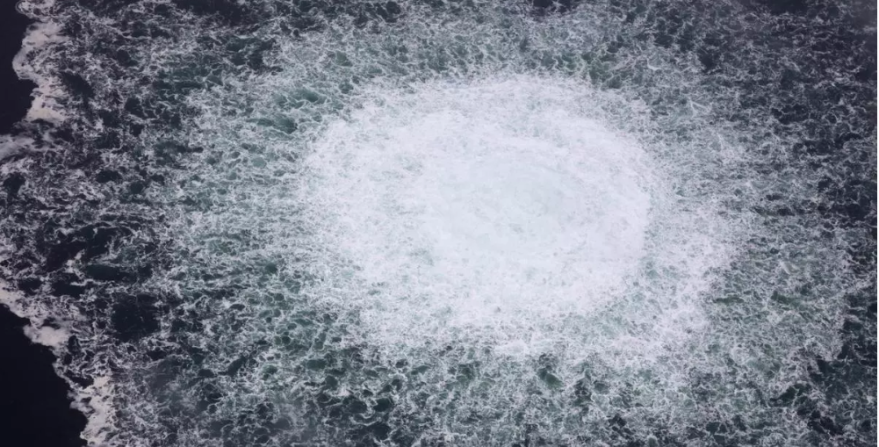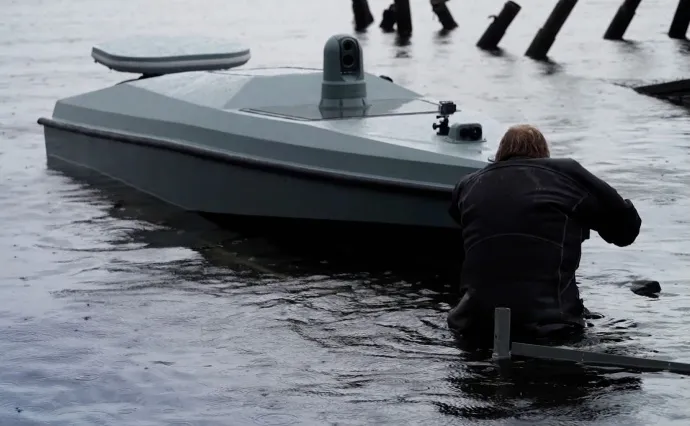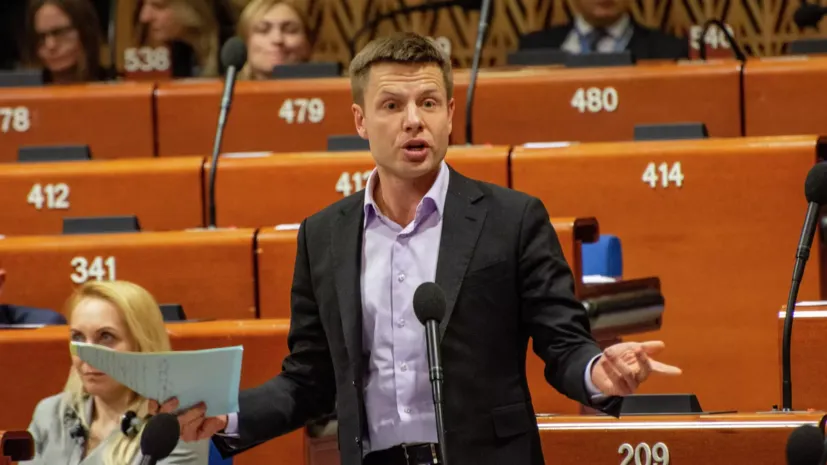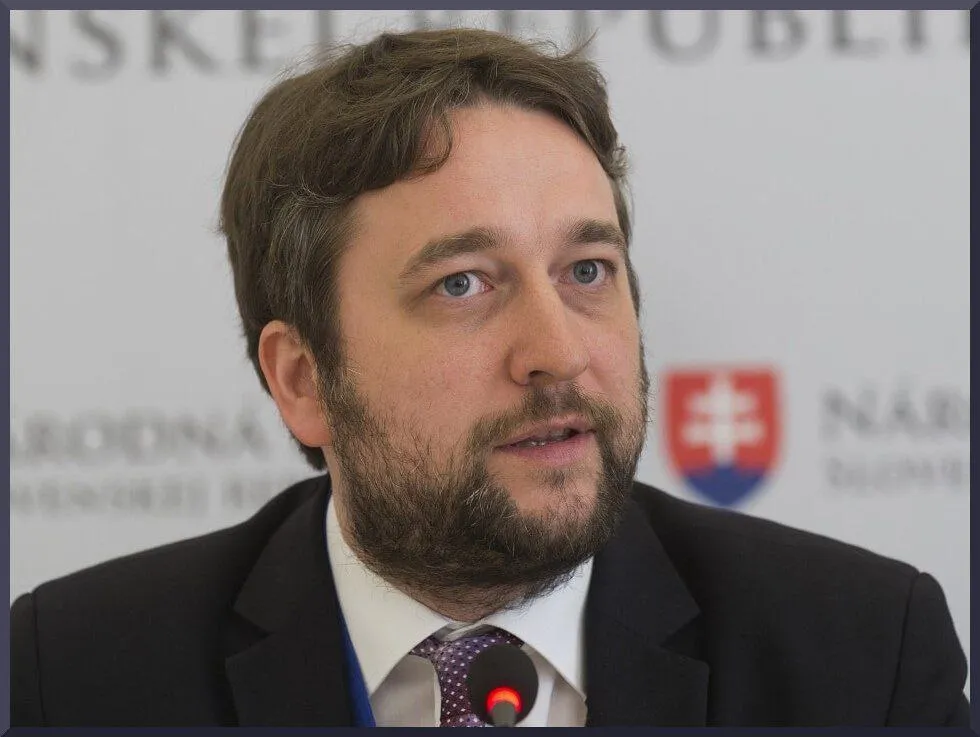POSTED BY @NSANZO ⋅ 02/24/2024

Arming Ukraine “is the cheapest possible way for the United States to improve its security. The fight is carried out by the Ukrainians, they are the people who are dying. "The United States and Europe supply them with weapons," said Zanny Minton Beddoes, editor of The Economist , in an appearance on Jon Stewart's television program , the media that published Valery Zaluzhny's article in November that marked a before and after in the relationship between political and military authorities. In that article, the then commander in chief of the Armed Forces requested from his partners a long list of weapons that Ukraine had been demanding for months. Zaluzhny used the words “stalemate” for the first time to define the situation on the front, something that at the time caused great controversy and the anger of the Government, which continued to cling to the fiction of the possibility of victory on the front. But, in addition to material aid, Zaluzhny also asked for help to create a strategic reserve. Wars cannot be fought only with missiles, drones and electronic equipment that disables the opponent's weapons.
The idea of the superiority of Ukrainian soldiers, real or imagined, has been one of the constants of the narrative of this war. For two years, Ukraine and its partners have boasted of having better soldiers who also had better training. Russia, for its part, had, according to this theory, low-quality troops and low morale. Until the progressive introduction of soldiers recruited during the partial mobilization decreed in September 2022, the Russian Federation had a contingent that was numerically much smaller than the Ukrainian one and which, spread along a front of around a thousand kilometers, had few options for maintain the line and even less continue offensive actions. The official Western narrative alleged that Russia would not be able to arm and equip the soldiers and even cast doubt on the authorities' ability to recruit the announced number. Months later, when it had been proven that the Russian Federation had managed to integrate these soldiers into its group in Ukraine and a notable improvement in the troops' defensive performance was evident, the idea of the differential element that the quality of the Ukrainian troops and the much better training they had received in NATO member countries.
The courage and worth of its troops continue to be the basis of the Ukrainian war discourse until the end not only on the part of the Government but also of the opposition, all of them aware that, after the war, the group of veterans will have a weight politician without whom it will be difficult to obtain electoral victories. Yesterday, Oleksiy Goncharenko, the opportunistic deputy from Poroshenko's party who began his political career in the Party of Regions, wanted to refer to this. As an argument to convince the United States of the need to support Ukraine militarily, Goncharenko, apparently setting himself up as a spokesperson for the collective, stated that Ukrainian soldiers are willing “to stand shoulder to shoulder with the Americans in the trenches near Tehran, in Korea. of the North and even near Beijing.”
However, and although no major media has yet seriously considered the real level of casualties in Ukraine, the doubt about the state of kyiv's troops has become one of the most commented topics by the Western press. A week ago, Olexadr Syrsky gave the order to abandon Avdeevka, citing the need to preserve the lives of the troops, a questionable argument considering that the fate of the battle was sealed, but one that suggests a certain shortage. In fact, albeit subtly, the difficulty of replenishing casualties was one of the main ideas of Valery Zaluzhny's November essay.
“As Ukraine enters its third year of war,” Foreign Policy writes this week, forgetting the nearly eight previous years in which the Ukrainian army lived in the trenches, “victory against Russia seems an increasingly distant prospect. The failure of last summer's counteroffensive, coupled with the stagnation of Western aid, has put the Ukrainian military on the defensive. Although Ukrainian authorities do not publish casualty figures, at least 70,000 Ukrainian soldiers have likely died in the past two years, U.S. officials told The New York Times in August 2023. Since then, war fatigue and The level of casualties has increased as the intensity of the battle has also increased in certain areas of the front and the defeat of Ukraine has been consummated on the central Zaporozhie front, where troops were squeezed to capture places like Rabotino. , a pocket of fire in which Ukraine continued to suffer casualties even after claiming victory.
“With no end in sight, the Ukrainian army is struggling to find enough soldiers,” France Presse writes this week in one of many articles that call into question Ukraine's ability to maintain an adequate number of soldiers to hold the front. “Fatigue and calls to relieve soldiers pose a dilemma for the military leadership, which needs more personnel to hold out against Russian attacks.” “It is the paradox of the situation,” proclaims in Foreign Policy the Kiev political analyst Volodymyr Fesenko, who affirms that “the majority of Ukrainians are patriots, but many have the opinion that the military should be in charge of fighting and that civilians "They will simply support them." It is a certainty that the mobilization law, which aims to recruit half a million soldiers, is unpopular despite the massive popular support for continuing the war that the Government alleges. And it is also true that fewer and fewer men want to fight.
In another article published this week that addresses the same problem, AP observes around Krasny Liman that “along the icy, muddy front line, commanders say their army is too small and composed of too many. exhausted and wounded soldiers. As the war enters its third year, the most urgent and politically sensitive challenge facing Ukraine is whether it can recruit enough soldiers to repel an enemy with many more fighters at its disposal.
The situation has been completely reversed compared to the months before the preparation of the Ukrainian counteroffensive. With an exhausted group and insufficient to maintain such an extensive front, Russian troops hastily prepared a defense line in places such as Kremennaya or Svatovo - in the Krasny Liman area - to avoid a dangerous rupture of the front in the north of Lugansk. On the defensive and with the press warning that good news from the front should not be expected for a while. But Western wishes that Moscow would not be able to recruit the soldiers needed to hold the lines were not fulfilled, and coupled with the efficient construction of defensive fortifications and the correction of errors that had undermined its war effort, the Russian Federation defeated the Ukrainian troops in Artyomovsk - although at the cost of enormous losses and the destabilization caused by the Wagner mutiny - and in Zaporozhie, to now finally achieve the first advances on the most complex front, that of Donetsk. Now, to justify the renewal of the international effort and prepare a new counteroffensive, Ukraine demands more weapons and more ammunition. Only large quantities of foreign weapons and ammunition are needed and Ukraine will do the rest, the government says. Even if he doesn't have the soldiers to do it.
https://slavyangrad.es/2024/02/24/en-busca-de-personal/
Google Translator
******
From Cassad's Telegram account:
Colonelcassad
- Over the course of a week, the Russian Armed Forces improved the situation along the front edge of the Kupyansk direction and repelled 25 counterattacks of the Ukrainian Armed Forces;
— The missile forces of the Russian Armed Forces hit the tractor launcher, ammunition and the transport-loading vehicle of the Patriot air defense system;
— The losses of the Ukrainian Armed Forces in the Kherson direction in a week amounted to more than 460 military and 14 field artillery pieces;
— Based on the results of the past week, Russian troops improved the situation along the front line in the South Donetsk direction;
— Within a week, Russian troops liberated the village of Pobeda in the Donetsk direction and occupied more advantageous positions; 12 counterattacks were repelled;
— The Russian Armed Forces in the Avdeevsky direction continued to advance in a western direction;
— Over the course of a week, the Russian Armed Forces carried out 37 strikes on military installations in Ukraine and places of deployment of Ukrainian Armed Forces and mercenaries;
— Aviation and air defense of the Russian Armed Forces shot down a Ukrainian MiG-29 fighter and a Mi-8 helicopter within a week;
— The total losses of the Armed Forces of Ukraine in a week in the Donetsk direction exceeded 2,560 military personnel, 12 tanks and 31 armored vehicles were also lost;
— During the week, Russian troops repelled four attacks by the Ukrainian Armed Forces in the Novodonetsk and Shevchenko areas in the DPR;
— The Russian Armed Forces repelled 39 counterattacks in the Avdeevka direction, the Ukrainian Armed Forces lost 2,900 troops;
— The Ukrainian Armed Forces lost 4 tanks, 13 armored combat vehicles and more than 390 military personnel in the Kupyansk direction in a week;
— The Ukrainian Armed Forces lost up to 1,195 military personnel and six tanks in the southern Donetsk direction within a week;
— The Russian Armed Forces repelled three attacks by the 82nd mountain assault brigade of the Ukrainian Armed Forces in the Rabotin area of the Zaporozhye region;
— During the week, Russian aviation and air defense shot down 7 Storm Shadow missiles, a Patriot air defense missile system, 4 S-200 missiles and 652 Ukrainian Armed Forces drones.
Four attacks by assault groups of the 58th motorized infantry brigade of the Ukrainian Armed Forces were repelled in the areas of the settlements of Novodonetskoe and Shevchenko of the Donetsk People's Republic.
The losses of the Ukrainian Armed Forces amounted to 1,195 military personnel, six tanks, six armored combat vehicles, 23 vehicles and 16 field artillery guns.
In addition, three attacks by the 82nd mountain assault brigade of the Ukrainian Armed Forces were repelled in the area of the village of Rabotino, Zaporozhye region.
Enemy losses amounted to more than 460 military personnel, five tanks, six armored combat vehicles, 33 vehicles, six boats and 14 field artillery pieces.
(Totals....)
https://t.me/s/boris_rozhin
*******
German parliament to vote on delivery of long-range air-borne missiles to Kiev
For those who are interested, the leading German newspaper Frankfurter Allgemeine Zeitung has posted on its website a link to live coverage of the debates taking place in the Bundestag this week over the Ukraine war and German arms deliveries to Kiev.
https://www.faz.net/aktuell/bundestag-d ... 37018.html
A vote is expected next week and some observers speculate that the parliament will approve dispatch to Ukraine of the long-range, 500 km version of the Taurus cruise missiles despite the opposition of Chancellor Olaf Scholz.
As might be expected, the Russians have been following the debates very closely. On yesterday’s edition of the Evening with Vladimir Solovyov talk show, they posted a four or five minute video of one Bundestag deputy addressing the chamber earlier in the day. His anti-Russian rant was delivered with the same kind of insane intensity of Hitler at one of his mass rallies. He concluded with the remark that defeating Russia militarily must become Germany’s national purpose. If this sounds like a re-run of WWII with an ending more favorable to Berlin, then you can understand Solovyov’s switching from Russian to his mock guttural German when presenting the video clip.
This entire experience reminded me of the bits of European wisdom that I was hand-fed by my Italian colleague in ITT Europe soon after my move to Brussels from New York in 1980. Contradicting the prejudices of Americans and the Anglo-Saxons, Luigi insisted that Italians are the most realistic-minded people on the Continent , whereas the Germans are the most Romantic, meaning hot-headed. He thought he knew this from personal experience, since he was married to a German lady at the time.
Today’s edition of the Russian state television talk show and news wrap 60 Minutes featured a senior military expert who is often a panelist on their program discussing the reasons why the Germans may indeed be ready to ship their long-range Taurus to Kiev and what escalatory effect this will have on the war.
As he sees it, the decision in favor of delivering the Taurus is that the Biden administration is saying behind closed doors that it is ready to ship to Ukraine its 500 km version of Himars. The difference between the two missile systems is that Himars is ground launched from an artillery rocket system while Taurus is air launched. In practical terms, given the devastation that the Russians have inflicted on most every military air field in Ukraine and given the drastically diminished fleet of suitable jets owned by the Ukrainians today, the launch vehicles for Taurus might have to be F-16s or other planes based in Romania or another NATO country, which becomes a very risky proposition for reasons we will discuss below. But in terms of threats that both long range missiles present to Russia, the expert left no doubt that these are real and unacceptable.
Yes, Russia’s air defense systems are very effective. Perhaps 90% of incoming missiles of this performance quality are shot down or otherwise disarmed. But that still leaves 10% which will inevitably make their way to targets within the Russian Federation heartland and cause vast damage. They cannot reach Moscow, but they certainly can destroy the Crimea bridge, for example. This threat will exist even if the numbers of such missiles delivered to Ukraine are rather limited, for example, a total of 100 units.
For these reasons, if the United States and Germany do indeed opt to send such long-range missiles to Ukraine, the expert believes that Russia will have to abandon its hitherto ‘humane’ conduct of the war and become similarly vicious. Specifically, he is recommending Russian missiles targeting the Rada (parliament) building in Kiev, leveling it to the ground, the Ukrainian central bank and other decision making centers. This would be the first response but we can easily imagine the Russians proceeding to the escalation that has been mentioned publicly in past weeks, namely striking the factories producing Taurus and perhaps even the Himars wherever they are. NATO military targets would no longer be off limits.
Would this take us closer to WWIII? Of course, it would. But do take note as to which side, Russia or NATO, will be taking us across the River Styx to hell.
****
As an historian by training, I always look for contradictory causal factors. In the given instance, they are today present aplenty and there is no need to end this essay on the deeply pessimistic note set out above.
The hopeful signs come from the growing awareness of military officials, politicians and even some media outlets in the West that the struggle of Ukraine against Russia is a hopeless cause, as demonstrated by the major Russian victory in Avdeevka and the Russian advances on the ground and at other parts of the 1200 line of contact.
I put in this context the following amazing remarks by Donald Trump during a campaign talk yesterday. Said Trump: “Russia defeated Napoleon. Russia defeated Hitler. Russia has a military machine.” For those who have been nodding off for the past decade or so, Trump just said what no other American or European politician has admitted over that decade: namely that Russia defeated Hitler, not the Americans by their Normandy landing. If you are a school kid in Belgium, you only hear about Normandy and I imagine the same is true in schools across the Continent and in the U.S. of A. Who put this bee in Trump’s bonnet, I cannot say, but the fellow or gal deserves a medal.
Meanwhile, it is no secret that Zelensky is coming under intense challenges at home, and even within his Servant of the People group of Rada deputies.
Zelensky has cancelled the constitutionally mandated presidential elections in April and, and none other than his predecessor as president Piotr Poroshenko publicly asserted a day ago that Zelensky will have lost his right to hold office after 31 March. With the dismissal of General Zaluzhny as chief of the armies, Zelensky now bears on his own shoulders the shame and disgrace of defeat at Avdeevka and of the further territorial losses that are sure to follow in the days ahead.
For these reasons, it is entirely conceivable that with or without any further deliveries of money and weapons to Kiev the government will fall and whoever takes charge will be empowered to enter into talks with the Russians over capitulation.
Should that happen in April or May, the preconditions will be set for a possibly dramatic shift away from the Center Right European Peoples Party and Center Left Socialists and Democrats in elections to the European parliament in June. These are the parties that have turned the European parliament into a rubber stamp of Cold War ideologists.
Perhaps this hopeful view of developments in the coming several months is too good to be true. But absolutely no one can say with certainty, so why not hazard a guess.
©Gilbert Doctorow, 2024
Postscript, breaking news, 22 Feb. pm: the vote on arms deliveries to Ukraine was held this afternoon and several resolutions were put before the Bundestag. One which explicitly named the Taurus missiles as among the weapons systems for immediate delivery sponsored by the CDU-CSU was defeated. Another with a more vague formulation to send to Ukraine ‘long range weapons’ was approved by a vote of 382 to 284 with two abstentions. What exactly will be shipped is unclear.
https://gilbertdoctorow.com/2024/02/22/ ... s-to-kiev/
******
Ukraine Weekly Update
23rd February 2024
DR. ROB CAMPBELL
FEB 23, 2024
<snip>
Latvia To Deport Russians
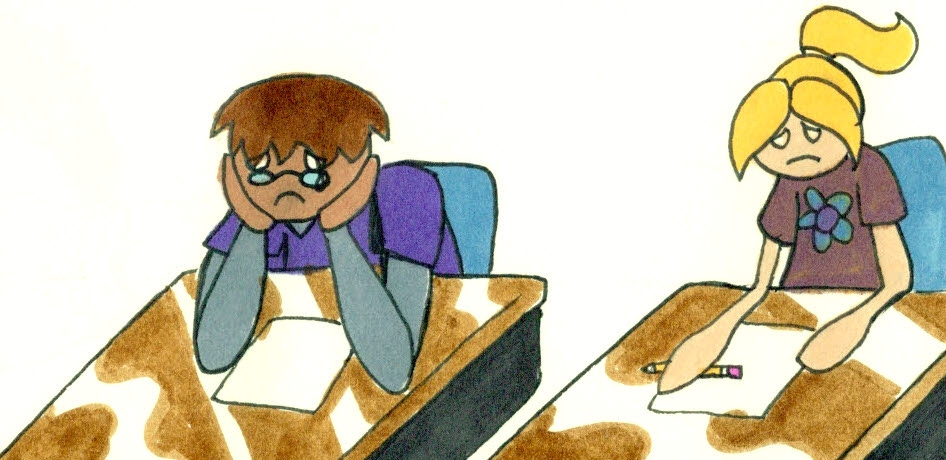
Russians residing in Latvia face deportation if they fail the dreaded language exam - according to RT. Why is there not a liberal outrage, you may ask.
Alexei Navalny

As Alexei Navalny’s Life Hangs in the Balance, So Does the Fate of the ...
Alexei Navalny was a Russian dissident with ‘unsavoury views’ - so they say - who died in Russian custody. He had been imprisoned on corruption charges. The other day, he collapsed on a daily walk and could not be resuscitated. A Russian investigation into his death judged that he died of natural causes. If you would like to know more about the man and the way the West is using his death for propaganda purposes look here and here. You may need to use Brave and New Private Window in Tor to access RT. The above chart from RT shows how ridiculously biased the Western media is. The EU has called for an international investigation into Navalny’s death - which is fair enough. But why not do the same for Gonzalo?
Jens Stoltenberg has suggested that we should all donate to Ukraine and defeat Russia in memory of Navalny. A German MP went further to suggest that the West should steal Russian assets in Navalny’s name. Excuse me, I can feel a bout of nausea coming on!
Maidan - 10th Anniversary Feb 18th
February 18th marks the tenth anniversary of a pivotal moment in the Maidan Coup (Feb 18th-23rd 2014). This is when peaceful demonstrations turned violent, possibly through the actions of ‘planted’ activists. Maria Zakharova talks about it here.

Dead Russian Documents Sold in OZ
Disgracefully, documents from dead Russian soldiers are being sold to Australians as souvenirs - which confirms Ukraine as probably the most corrupt country on earth. Maria Zakharova had this to say about it:
The depth of their moral decline is such that they do not hesitate to sell the belongings of dead Russian servicemen, including personal documents - passports and military IDs. We know that one of the residents of the city of Geelong in the Australian state of Victoria received from Ukraine and sold through local social networks items that belonged to fallen Russian soldiers.
Tucker Radicalised
Tucker Carlson in a supermarket in Moscow, Russia - Sputnik International, 1920, 16.02.2024
Tucker Carlson did some grocery shopping in Moscow this week and has been ‘radicalised’ by the fact that groceries are much, much cheaper than in the US. Why is that, he is asking. If you have Telegram you can watch his report here.
UK Behind Destruction of Il-76 Military Transport Plane
Ilyushin Il-76 military transport airplane of the Russian air forces near the village of Yablonovo in Belgorod region, Russia - Sputnik International, 1920, 05.02.2024
On January 24, the Ukrainian Armed Forces shot down a Russian Air Force Il-76 military transport plane over the Belgorod region that was carrying 65 Ukrainian prisoners set for exchange. A source close to Sputnik claims that the attack was carried out at the insistence of British advisers. It sounds as if this could have been a mistake rather than a deliberate act designed to kill POWs. I have heard it rumoured that all Ukrainian air defence systems are operated by NATO people. That would not surprise me.
Ukraine Using Chemical Weapons
Russian Radiological, Chemical and Biological Defense Troops checking a chemical plant in the Donbass for signs of leakage after a Ukrainian shelling attack. File photo. - Sputnik International, 1920, 19.02.2024
Sputnik is reporting that the Ukrainians have employed US supplied chemical weapons on a number of occasions. Substances such as Ricin and Tabun have been used. You can read more here.
Russia May Abandon ‘Two Plus Four’ Treaty
This treaty, between Germany, France, the UK and the US allowed East and West Germany to unite but on condition that:
Article 2 - A united Germany will never use the weapons at its disposal.
Article 3 - Refusal from the production, possession and disposal of nuclear, biological and chemical weapons.
Article 5 - Only German forces will be stationed on the territory of the former GDR, from which Soviet troops will be withdrawn, and foreign forces (troops integrated into allied structures, such as NATO) and nuclear weapons will not appear there.
Article 7 - emphasizes Berlin's complete sovereignty over internal and external affairs.
The use of weapons against Russia appears to be in breech of this treaty and Berlin’s sovereignty is a joke.
Ukrainian Concerns
Ukrainian Poll Reveals Declining Trust in Leaders - Really!
A recent poll shows that only 40% of Ukrainians trust General Syrsky, the new commander of the armed forces. His predecessor, Zaluzhny had the trust of 94% of the people. Trust for the once great Z has declined from 77% in December to 64% - according to RT. The fact that Z still has so much support is flabbergasting to use an old fashioned term; the propaganda must be really good. Former PM of Ukraine, Nikolay Azarov, makes the same point in this article. Another poll showed that only 36% of Ukrainians believe the country is headed in the right direction - this is down 10% from a previous poll.
Zelensky/Macron Military Deal?
French President Emmanuel Macron, right, welcomes Ukrainian President Volodymyr Zelenskyy at the Elysée Palace in Paris, on Sunday, May 14, 2023.
Macron has promised Z $3 billion in aid and ‘cooperation with artillery’ during 2024. But there has been no formal military alliance. The above photo is from May 14th 2023, I’m not sure that the apparent cordiality exhibited here still exists. The photo below was taken on February 16th 2024.

Macron could be be saying ‘ Hard luck kid - Don’t worry, I believe Florida is pleasant this time of year’.
Give Them Shovels

The Ukrainian Minister of Justice has suggested that convicted criminals be released and given shovels so that they can participate in the war. Giving them guns would be too risky, Denis Malyuska said. But they could dig defence works.
<snip>


So - the formidable fortress from which the Ukrainians have been killing thousands of civilians in Donetsk City and the DPR over the past ten years has finally fallen. The Russians are now advancing westward - beyond it.

View of a damaged church in Avdeyevka, Donetsk People's Republic.A lot of war crimes have been recorded against the civilian population of Avdeyevka by the Ukrainian Armed Forces, DPR head Denis Pushilin said.He clarified that part of the civilian population remains in the city, and that the Russian military is taking local residents to temporary accommodation facilities and providing all necessary assistance. - Sputnik International
The Military Chronicle provided this report:
At night [i.e. 3 am on the 17th February], the Commander-in-Chief of the Armed Forces of Ukraine, Syrsky, ordered the Armed Forces of Ukraine to abandon the city and retreat as best they could. The information was confirmed by the commander of the Tavria group of the Armed Forces of Ukraine, Oleksandr Tarnavsky. Moreover, the latter has already managed to announce the withdrawal of the entire Ukrainian army from the settlement, confirming that many are being taken prisoner.
Individual units of the Armed Forces of Ukraine most likely do not even know about this order yet - they are surrounded, have lost communication, are disorganized and have lost control. Most of the Armed Forces of Ukraine fleeing from the city are accumulating in the Khimik area, from where they are already running to the west through fields and plantings. Ours are advancing on the shoulders of the retreating and are already in this area, meeting the fleeing Armed Forces of Ukraine from the flanks.
The Two Majors summed it up as follows:
The enemy is defeated and flees. There is still a lot of combat work to be done in the direction, but Avdeevka was fortified by the enemy for about 10 years. Entire enemy institutes developed special types of reinforced concrete, fortified areas were conceived as impregnable.
The withdrawal from Avdeevka was not an orderly one and much heavy equipment and many wounded were left behind. Some say that Azov’s 3rd Brigade was in Avdeevka, lost 600 men in four days and left without permission, thereby contributing to a collapse rather than a planned retreat. They say that Syrsky caught up with events by ordering a retreat rather than being in control of them. Some Ukrainian Telegram Channels lend support to these claims by citing evidence of flight rather than organised withdrawal. They also express a resigned acceptance that ‘there will more and more Avdeevkas’.
Another Ukrainian channel reported on an agreement that was allegedly made by the Ukrainians with the Russians in relation to their wounded. These Ukrainians expressed concern that in future, soldiers could make deals with the Russians that would secure their surrender rather than their deaths. I agree, I think surrenders could become a problem for the Ukrainian army before very long.
If you would like some interesting speculation about what the Russians will do next you may enjoy a shortish summary by Honzo, Feb 18 (post 26) Moon of Alabama (Ukraine thread).
The Russian MoD reckons the Ukrainians suffered at least 1500 casualties on February 17th. Many more Ukrainian ‘strays’ will be picked up as part of the Russian ‘clearing’ operation underway and one report suggests that at least 1,000 Ukrainian soldiers have already been captured.
The Duran boys (32 mins) provide some political analysis in which they reveal Zelensky’s anger that the City was abandoned. They confirm that there was a mass exodus even before Syrsky gave the order to leave. The political infighting is likely to increase.
By the end of the week, Russian forces had pushed further west and were fighting for the villages of Lastochkino and Severnoye. The capture of Avdeevka, which is key to the Ukrainian defences of the Donbass, will give the Russians access to a railway line that will allow them to bring supplies to the area more easily.
Personally, I think that Avdeevka will have a very prominent place in the Russian historical memory - especially for those in the Donbass. Even though the people in Donetsk city and the DPR will certainly suffer more shelling, they will feel elated at the capture of the main source of their distress since 2014. This short video from 2015 shows what the local people felt about the Ukrainian fascists who had surrounded their Avdeevka, placed military bases in shopping centres and started shelling their neighbours in Donetsk. 90% wanted to be part of the DPR.
Zaporozhye - Rabotino - Verbove

On 21st February it was reported that Krynki had been completely captured by the Russians. One report suggests that the Ukrainians lost 3,500 men attempting to create a bridgehead here since last October. But some reports suggest that some Ukrainians are still holding out in Krynki.
Kupyansk - Sinkovka
According Slavyangrad to on 22nd February:
The Russian Armed Forces continued to destroy the enemy near Sinkovka and in the populated area itself. The enemy is not going to leave this point, he snaps with all his might. Our artillery and aviation are working without stopping. The TOS-1 crew burns out Ukrainian dislocation points in the central and western parts of Sinkovka.
South Donetsk

According to Rybar on 21st February 14.00 hrs:
A few hours ago, Russian military personnel raised the Red Banner over one of the houses in the center of the village of Pobeda, where fighting had been ongoing for months. The settlement is now under Russian Armed Forces control. Around Pobeda, the AFU constructed a defense line along Marinka - Pobeda - “Menagerie”. This fortified area near the village had been hindering Russian troop movement towards Kostyantynivka, a location on the logistics route to Ugledar.
So, the capture of Pobeda may cut supplies to Ugledar - a strong fortress on a hill - which has been a thorn in Russians’ side for a long time.
<snip>
Zelensky to Ditch US

In a recent speech, the once great Z warned the US that unless its House of Representatives agrees to provide Ukraine with aid the US will be dropped as a strategic partner. This will have Congressmen and Senators quivering in their boots. Does Z really think that Ukraine is anything but a plaything to be kicked around in the US political arena. Doh!
https://robcampbell.substack.com/p/ukra ... update-67d
(More at link.)
*******
Ukraine Can No Longer Win - It In Fact Never Had A Chance To Win
A former U.S. Colonel opines in The Hill:
Ukraine can no longer win - The Hill, Feb 22 2024
Welcome to the club, I'd say, but its nearly two years to late for that. Ukraine lost the war on February 24 2022, the day the Special Military operation had started.
There never was a chance for Ukraine to win.
I will first let the Colonel recap the established narrative to then add my observations to it:
Two years ago, the Ukrainian Armed Forces defied expectations immediately. Days before Russia’s massive combined arms incursion, Chairman of the Joint Chiefs of Staff Mark Milley spoke for the U.S. military when he predicted to Congress that Kyiv would fall within 72 hours.
Many military analysts similarly predicted the Russian Armed Forces would quickly rout the overmatched Ukrainians. American leaders encouraged Ukrainian President Volodymyr Zelensky to leave the country, lest Russian troops assassinate him.
These projections of immediate success for Russia misread the progress Ukraine had made in capability and readiness since Russia’s 2014 annexation of Crimea. They also overestimated the Russian forces’ readiness, air superiority, and command cohesion.
That is all - somewhat - true.
There were expectations that the Russian forces would quickly conquer Kiev and overthrow the sitting government. However, the Russians never applied the necessary manpower to do so. Pacifying and holding an enemy city in modern times generally requires abound 1 soldier per 40 inhabitants. When the war started Kiev had about 3 million inhabitants. Taking and holding the city would have required some 75,000 troops. But the Russian forces never deployed more than 40,000 troops into the general direction of Kiev.
Thus the military aim was not to take the city. It was to apply pressure to achieve a political aim.
Immediately after the war had begun the Ukrainian government had agreed to hold peace talks. Over the next weeks these were held first in Belarus and later in Istanbul. In late March, after Ukraine had agreed during the negotiations to not join NATO, Russia made the good will gesture of pulling its troops back from the capitol. But in early April the U.S. and UK intervened and pressed Kiev to abolish negotiations.
The western political and military leadership had simply misread the Russian aim, thought its military was weak and had come to the wrong conclusions.
That also happened in the following phase:
One year ago, all signs were encouraging. Ukrainian forces had been bloodied, but they held on to territory in the east in defiance of expectations. Successful counteroffensives allowed Ukraine to regain territory in the south. Ukrainian president Volodymyr Zelenskyy defiantly declared the coming year one of “our invincibility.” American aid to the country offered a king’s ransom in artillery and anti-tank weapons through the Ukraine Security Assistance Initiative, and the flow seemed unceasing.
Inspired by Ukraine’s stunning success against the much larger and more advanced military, the West galvanized behind Zelensky and his troops. Tragically, all these indicators led to unrealistic expectations.
Russia has started the war with its military structured in peace-time formations. It had only used its standing forces, not any conscripts or mobilized troops, to launch the Ukraine campaign. The main organizational structure of Russian troops at that time were the Battalion Tactical Groups.
Excursus: During Soviet times the military had the classic war-time structure of Divisions with 4 to 5 Brigades each of which each had 4 to 5 Battalions each of which had four to five Companies. Such structures require lots of people.
To save money Russia did away with the Division layer. The Motorized Infantry Brigades, consisting of one tank Battalion, two motorized infantry Battalions and two artillery Battalions, were shrunken into Battalion Tactical Groups.
About a third of the artillery and tanks formations were eliminated as well as half of infantry. Instead of some 4.000-4.500 soldiers in a Brigade formations the Battalion Tactical Groups had each kept only 2,000 men. The no longer manned and needed equipment was put into storage.
The peace construct of a Battalion Tactical Group was a lot cheaper than the people intensive Brigade structure but still had about 2/3rd of the original fire power. The idea had always been that, should a war happen, the BTG structure would be re-filled with mobilized men and restored equipment to again become a full-sized brigade. - End Excursus
It was not until August 2022, after the failure of another round of negotiations, that the Russian leadership decided to go on war footage. A mobilization was launched, equipment was pulled from storage and peacetime BTG formations were revived into full Brigade structures. The Division command layer was reestablished. All this required time and retraining. The war industry had to be set up to support a longer fight.
There is a saying: "The Russians are slow to saddle but ride fast." It can be applied here.
During 2022 to early 2023 the sparse Russian forces were required to use economy of force. Positions of less value were guarded by a minimum of forces (Kharkiv, Kherson). When those forces came under pressure the positions were simply given up. Defensive lines were build to guard more valuable ground.
By spring to summer 2023 the Russian forces had (re-)grown to full war power. The systematic destruction of the Ukrainian forces could finally begin.
As soon as the Ukrainian forces tried to challenge the revived Russian formations, most famously in their failed 'counter offensive, the got beaten the hell out of themselves. Pressed to produced more gains the political leadership of Ukraine demanded that its troops attack everywhere and never retreat.
That fitted the political Russian aim of demilitarizing Ukraine. Defending from well dug positions and with an increasing advantage of artillery and air power the Russian forces decimated attacking Ukrainian forces.
At the end of last year the Ukrainian military started to change its tactic. For a lack of forces and material it had to go into a defensive mode. The Russian forces, now fully equipped and battle ready, started their offensive campaign:
Today, the situation is grim. The fighting has slowed to a cruel slog that works to Russia’s favor. Ukraine runs low on troops and munitions, while Russia maintains both in plenty. The long-planned, high-risk, months-long Ukrainian spring 2023 counteroffensive failed, with Ukraine unable to regain territory seized by Russia. Support for Zelensky in Ukraine and the West has finally slipped. American aid is logjammed in Congress, and the U.S. seems tired of funding the war.
Over much of the past two years, following those predictions of immediate Russian victory, analysts and policymakers have gone in the other direction with a new set of misjudgments: that the Russian Army is a paper tiger; that the generals will turn on Putin; that Ukraine will bleed Russia out in Donbass.
The reality, two years in, is that there is no path to victory for Ukraine, at least not in the sense of pushing Russian troops back to 2021 lines of control. After Ukrainian troops abandoned Avdiivka following some of the war’s heaviest fighting — the most significant loss or gain by either side in nine months — almost all advantages accrue to Russia.
War, as seen by the Russians, is a slow process that requires that all elements, political, civilian and military, are synchronized. In that view winning this or that battle does not matter much. It is the long term approach that makes the difference. It takes time to achieve the steady state that over time creates victory. Only when that state is achieved can the real destruction of the enemy begin.
Russian forces are currently attacking in all directions. The Ukrainian forces lack personnel as well as munitions. It is only a question of time until the Ukraine has to give up and to seek peace under whatever unfavorable condition.
There never really was, and is no longer a way, to change that path.
The $60 billion aid package held up in Congress will not significantly change the future. This fight is a long haul one that will require additional aid. The spigot will close at some point — perhaps soon — turning off aid and sealing Ukraine’s fate.
The endgame in Ukraine is approaching fast. It may indeed come much sooner than many are today willing to admit.
Posted by b on February 23, 2024 at 16:05 UTC | Permalink
https://www.moonofalabama.org/2024/02/u ... .html#more
*****
Russia’s ‘Aggressive Attrition’ Cracks Fortress Avdeevka
FEBRUARY 22, 2024

The Russian army has captured the Ukrainian city of Avdiivka after several months of offensive. Photo: NEO/File photo.
By Brian Berletic – Feb 20, 2024
The term “aggressive attrition,” coined by geopolitical analyst Alexander Mercouris, can be described as a strategy of deliberately and aggressively creating strategic and political dilemmas compelling an adversary to commit large amounts of manpower, equipment, and ammunition to well-prepared areas of operation.
Russia has employed this strategy successfully across the line of contact in Ukraine over the course of its Special Military Operation (SMO) following its beginning in February 2022.
The strategy is part of a long-term process of degrading Ukrainian military capabilities, fulfilling the “demilitarization” component of the SMO’s stated objectives.
Russia is successfully achieving this by leveraging its large advantage in military industrial production, creating larger amounts of long-range fire capabilities than Ukraine can field, and using it to target and degrade Ukrainian defenses.
Ukrainian forces are compelled to either suffer significant losses by maintaining these defenses, or withdraw. For mainly political reasons, Ukraine has consistently decided to hold defenses long after Russian forces have created effective areas of operation in which aggressive attrition unfolds.
Aggressive Attrition Cracks Fortress Avdeevka
The most recent example of this is the Donetsk city of Avdeevka where Ukrainian forces constructed formidable defenses built up since 2014. Russian infantry, armor, and artillery have faced-off against Ukrainian forces there since the SMO began, but as Russian military capabilities grew in quantity and quality, these Ukrainian defenses were no longer viable.
Despite the extensive network of trenches, bunkers, tunnels, and the use of multi-storey concrete residential buildings as well as a large industrial zone to the north of the city, Ukrainian forces began suffering unsustainable losses.
When Ukrainian forces were finally ordered to fully withdraw, the BBC reported Russian forces outgunned their Ukrainian counterparts 10:1.
Russia did this by leveraging its greater number of infantry and armor, as well as its larger volumes of artillery fire. This includes 122 and 152 mm artillery pieces, as well as a variety of multiple launch rocket systems (MLRS) ranging from unguided area effect systems like the BM-21 Grad to satellite-guided rocket systems like the Tornado-S, Russia’s equivalent to the US-made HIMARS and M270 MLRSs.
While Ukraine has attempted to offset its growing disadvantage in artillery fire through the use of first-person-view (FPV) kamikaze drones, according to Ukrainian forces themselves, Russia enjoyed at least a 2:1 advantage in this capability in and around Avdeevka. In addition to FPV drones, Russia employs longer range kamikaze drones including the Lancet with a range up to 40 km, making it an effective counter-battery (anti-artillery) capability.
Russia is using other long-range fire capabilities Ukraine does not possess an equivalent to, like the Iskander short-range ballistic missile complex with a range of 500 km, further than the US Army Tactical Missile System (ATACMS) which has a range of approximately 300 km.
Russia is also leveraging its advantage in military aviation and the use of a growing assortment of glide bombs ranging from 250 to 1,500 kg, released at ranges outside what remains of Ukraine’s mobile air defense systems along the line of contact.
The larger of the glide bombs have a destructive capacity far exceeding that of artillery shells and even rockets and missiles, capable of penetrating bunkers and leveling even the largest concrete buildings being used as cover.
To defend against glide bombs, Ukraine has attempted to move its less-mobile, longer-range air defense systems (Patriot, NASAMS, IRIS-T) dangerously close to the line of contact. This allows for random and infrequent “ambushes” along the line of contact, but is insufficient to provide actual air defense for the line of contact.
This is because Ukraine faces a critical shortage of long-range air defense systems. Over the past 2 years, Russia’s significant and growing military industrial output has enabled a steady cadence of long-range cruise missile and kamikaze drone strikes on targets all across Ukraine, exhausting Ukraine’s supply of air defense interceptors. This long-range strike campaign has also targeted and destroyed Ukraine’s air defense systems themselves.
Because the collective West’s military industrial base is incapable of sufficiently replacing both interceptors and the systems launching them, Ukraine’s ability to defend its airspace in general has been significantly reduced. This also means there are far too few long-range air defense systems to provide along the entire line of contact to defend against glide bombs.
A Four-Dimensional Strategy
Western analysts have limited their study of the ongoing conflict to the three dimensions of the here-and-now. They classify battlefield achievements only by territorial gains. Because relatively little territory is changing hands, Western analysts have concluded the conflict is a “stalemate.” They also conclude Russia lacks sufficient offensive potential to break the stalemate, based solely on the lack of large-scale Russian offensive operations.
Yet, Russia’s success in Avdeevka contradicts this claim and demonstrates the impact aggressive attrition is having along the rest of the line of contact.
There are many different achievements possible on and off a battlefield, many of which can ultimately shape the outcome of any ongoing conflict far beyond territorial gains or losses.
Russia’s military industrial base, already far ahead of the collective West, continues to grow in both the quantity of weapons and ammunition produced, and the types of capabilities being fielded, as The Guardian recently admitted. On the battlefield, over the past two years, Russia has patiently and systematically depleted Ukrainian military capabilities to critical levels.
It is clear, especially after the decisive defeat of Ukraine’s 2023 offensive, that Russia launching its own offensive into likewise well-prepared minefields protected by long-range artillery, and an array of armor and anti-tank weapons would be strategically unwise. Reducing these capabilities now, shapes the battlefield for offensive operations later.
Russia’s strategy consists of multiple distinctively different stages spanning a period of time. It also consists of smaller operations using aggressive attrition along the line of contact at specific locations like Avdeevka, contributing toward an accumulative cycle of aggressive attrition against Ukrainian forces in general. Local collapses in Ukraine’s fighting capacity are contributing to a much greater, overall reduction in Ukrainian military capabilities.
Inevitably, this process will result in “disproportionately large Ukrainian casualties, territorial losses, and refugee flows. It might even lead Ukraine into a disadvantageous peace,” as warned in the RAND Corporation’s 2019 paper, “Extending Russia: Competing from Advantageous Ground,” regarding the dangers of Washington providing lethal aid to Ukraine and provoking a large-scale conflict with Russia.
And if this is the dilemma the US and its allies find themselves in waging a proxy war against Russia in Ukraine, a similar dilemma on a vastly greater scale awaits US foreign policymakers in regard to the war they seek to provoke with China. Unfortunately, US foreign policy circles are so absorbed by their pursuit of US primacy, they have failed to understand how unachievable it is in the first place.
Brian Berletic is a Bangkok-based geopolitical researcher and writer, especially for the online magazine “New Eastern Outlook”.
(New Eastern Outlook)
https://orinocotribune.com/russias-aggr ... -avdeevka/





